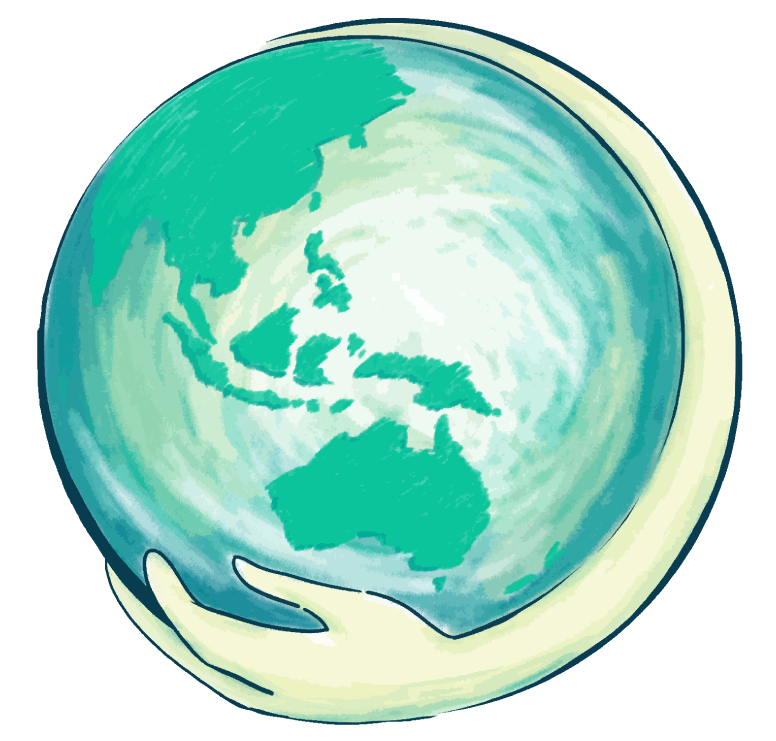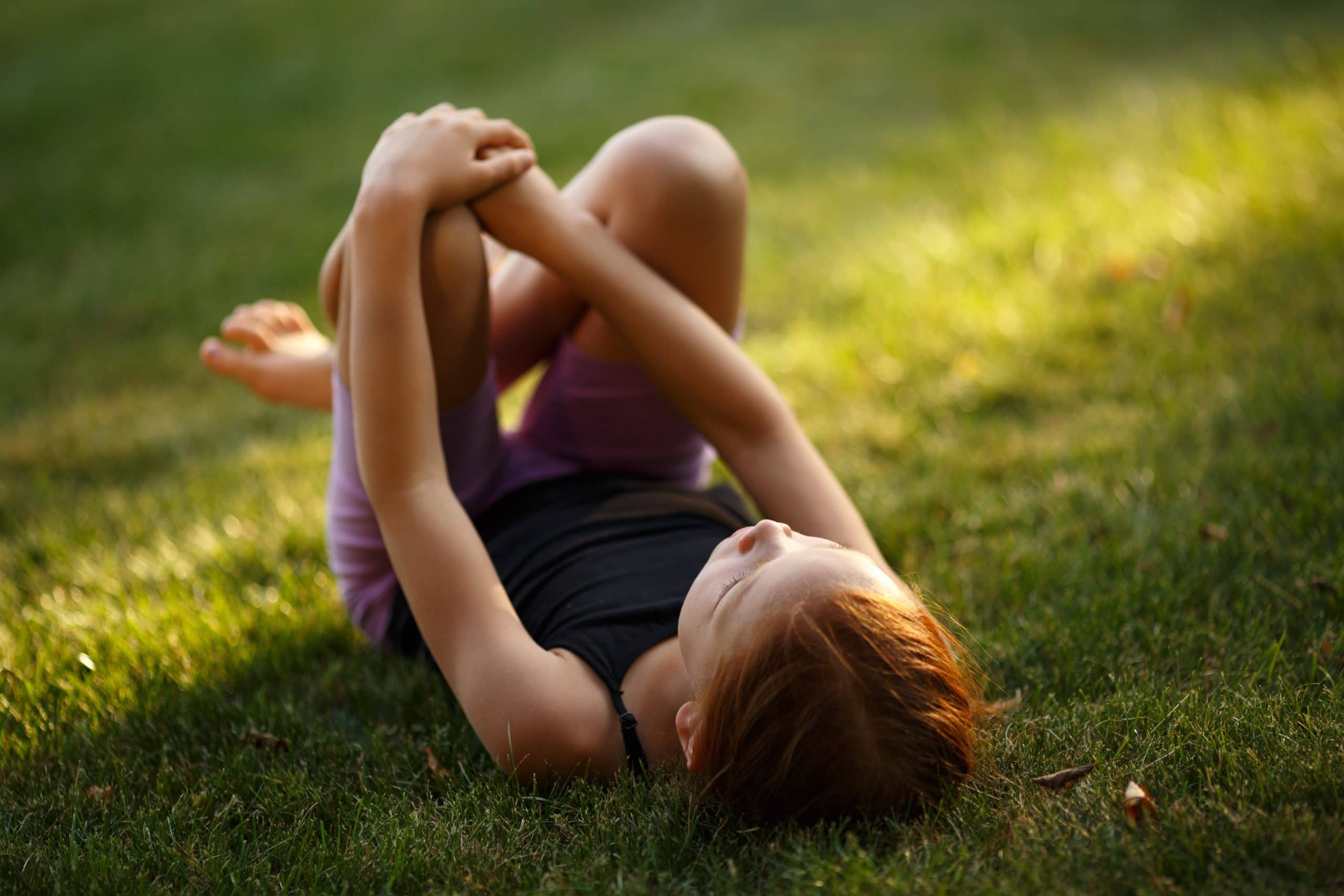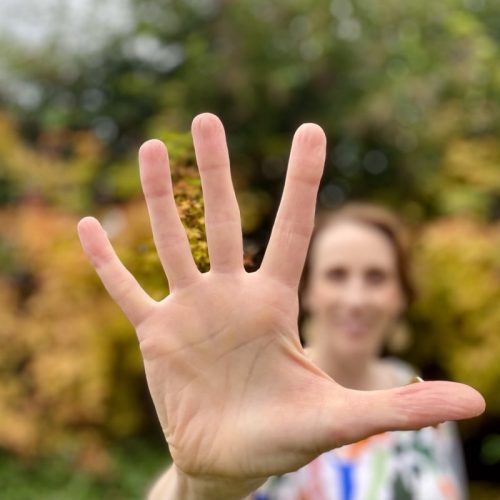Healthy green lawns feel amazing underfoot and are glorious to sit/lie on to enjoy some sunshine and experience the amazing benefits of being in nature. And let’s face it – after months of being cooped up inside, being out in nature sounds like paradise!!
But are weed-free lawns (from toxic pesticides) worth the risk they pose to Us and Earth?
Research on Health Effects
Even tiny and very brief doses of herbicides (far below current ‘safe’ levels) can damage infant brains. These neurological effects may not be seen until adolescence or adulthood. [i]
In 2015, the International Agency for Research on Cancer (IARC), the specialised cancer agency of the World Health Organisation (WHO) classified glyphosate as a ‘probable human carcinogen’.[ii] Glyphosate has been linked to cancer of the lymphatic system and is considered a risk factor for non-Hodgkin lymphoma, and other cancers.[iii] It is a potential endocrine disruptor for exposed children, causing disturbances in reproductive development, when the exposure is during puberty.[iv] Glyphosate also poses risks to pregnant women, having an effect on foetal development.[v]
Roundup – the brand name of a glyphosate-based herbicide – has also been found to inhibit the production of steroid hormones and this may result in loss of fertility in men.[vi] Exposure of farm workers to smaller amounts of Roundup, for example by rubbing in an eye, is reported to have caused:
- Swelling of the eye and lid;
- Rapid heartbeat;
- Elevated blood pressure;
- Swelling of the face (due to residues transferred from the hands); and
- Eczema of the hands and arms.[vii]
Other reported effects include acute toxic pneumonitis after vapours and air-borne droplets have been inhaled.[viii]
Calls to Ban Glyphosate
In 2017, over 1.3 million people signed a petition calling for a European ban of glyphosate. In 2018 researchers from the US non-profit organization Environmental Working Group (EWG) found that all but two of 45 samples of products made with conventionally grown oats contained glyphosate residue, most at higher levels than what the scientists consider protective of children’s health.[ix]
In the European Union, a number of countries, including France, Italy, Denmark, Belgium, Netherlands, Portugal, and Spain, have either completely banned or restricted glyphosate use, with the president of the Portuguese Medical Association calling for a worldwide ban of glyphosate.[x]
Here in Australia, authorities have held the line on banning glyphosate, with Roundup still available for purchase at local supermarkets. But should we be worried that Australia has not banned it?
Research on Environmental Effects
Glyphosate-containing herbicides are used to control plants considered to be weeds, or to clear vegetation. While they were initially promoted as relatively benign to non-target plants and animals, research indicates that other plants, animals, invertebrates (e.g. insects) and micro-organisms may also be exposed to (& impacted by) glyphosate-containing herbicides[xi]:
- Beneficial insects can be killed by glyphosate while it’s being sprayed (bees are just one example);
- Animals can be impacted by eating treated crops, or by eating prey that has been feeding on treated crops;
- The wind can blow the herbicide spray into habitats adjacent to the treated area; and the rain can wash it into groundwater, streams, rivers and coastal waters;
- Many bacteria and fungi in the soil environment are sensitive to glyphosate, but some are naturally resistant, meaning certain microbes might survive better than others under heavy glyphosate use. This might limit the ability of soils to carry out important functions such as nutrient and carbon cycling. This has the potential for serious environmental consequences; and
- Glyphosate bioaccumulates in the environment, meaning glyphosate residues can stick around in water and soil for several months, maybe even years, and has the potential to build up to higher levels in the environment with each use.
Even though pesticide studies don’t provide 100% conclusive proof (as studies rarely do) that substances like glyphosate can pose risks to us and earth – I’d rather err on the side of caution – especially when weed-free lawns are not necessary for a long and healthy life!
For Us and Earth Tips:
The following tips may help you to deal with weeds naturally in your own backyard:
- Mulch is an easy fix and helps keep your soil cool, wet, and eliminates light that weeds need to grow;
- Boiled water or water from your cooked pasta/veggies is weed killer for cracks in pathways and driveways. We recently used this for weeds in our grass too. It worked but it killed off a lot of healthy lawn as well. So maybe stick to cracks and small weedy areas. If you add a tablespoon of salt to the boiling water, it’s even more effective!;
- Don’t discount rolling up your sleeves. The best way will always be good old-fashioned elbow grease. But wait till after it’s rained to make pulling weeds easier;
- Newspaper is a good solution to cover low-growing weeds – the lack of sunlight will exterminate them. The newspaper also feeds the soil as it decomposes (win-win);
- Horticultural vinegar (20% acetic acid) will kill weeds but be careful as it will kill other plants it comes in contact with too. ALWAYS wear protective clothing and eyewear;
- Lawn edging and retaining walls (although not cheap) are a long-lasting solution for keeping weeds at bay;
- Keep your grass to 2-3.5 inches long. The length of your grass can impact its health and make it more or less susceptible to weeds; and
- Change your mindset. Many weeds are native plants that are supposed to thrive (hence why they are so difficult to kill). For example, in Japan, moss is cultivated for landscaping, while in the U.S., it’s commonly eradicated with pesticides.
Finally, is the grass always greener on the other side? I don’t believe it is. I’m happy to stick to my side of the fence, to be satisfied that I’m trying to live the healthiest and happiest life I can, striving to lower my risk of disease, and (wherever practical) contributing to a healthier earth.
Yours in Health,
Carolyn
[i] Smith, R & Lourie,B. (2010) Slow Death by Rubber Duck: How the Toxic Chemistry of Everyday Life Affects Our Health.
[ii] https://www.iarc.who.int/wp-content/uploads/2018/07/MonographVolume112-1.pdf
[iv] https://www.ncbi.nlm.nih.gov/pmc/articles/PMC3138025/
[v] https://www.ncbi.nlm.nih.gov/pmc/articles/PMC3138025/
[vi] https://www.frontiersin.org/articles/10.3389/fendo.2021.627210/full
[vii] http://www.ecochem.com/ENN_glyphosate.html
[viii] http://www.ecochem.com/ENN_glyphosate.html
[x] https://www.dw.com/en/whats-driving-europes-stance-on-glyphosate/a-53924882



Want to learn more about reducing your exposure to toxics in your everyday products, and other simple swaps for a healthier you & earth?
Sign up here and receive my free 5 Easy Ways to Reduce Toxics OR Join my mailing list and receive regular tips to lower your toxic load.